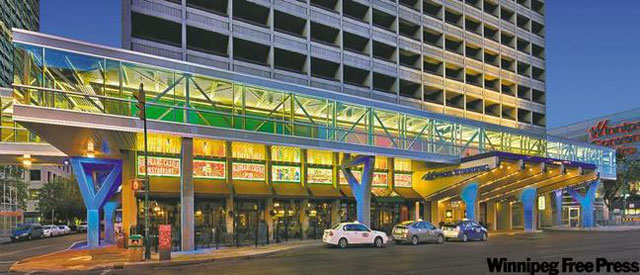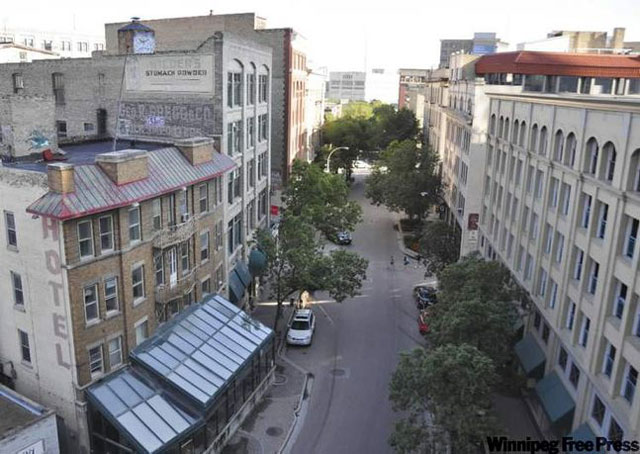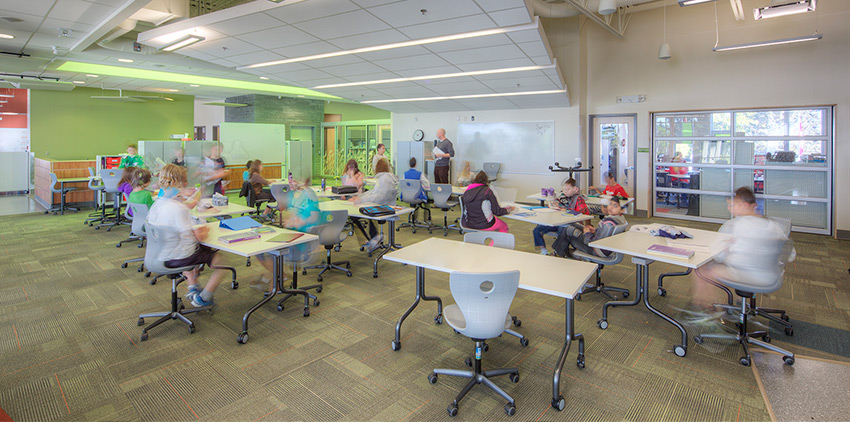Learning in a Flat World
- Details

By Greg Hasiuk, MAA, SAA, MRAIC, LEED®AP
Practice Leader, Number TEN Architectural Group

I was recently at the 87th Council of Educational Facility Planners International Conference in San Jose California.
Notable keynotes speakers were Robert Scoble and Tom Friedman (http://www.cefpiworldconference.org/speakers.php#Naked).
The theme was “Learning in a Flat World”. It was inspiring! Here are some of my notes:
Facts no longer need to be learned. Concepts and connections do.
Information no longer needs to be found. It finds you.
The internet allows the gathering of the world’s knowledge.
Social Networks allow the gathering of the world’s people.
Collaborative problem solving is now possible with people from around the world, in real time.
To flourish, you will have to generate your own content. Share it. Post it. Let the world come to you.
Blot on downtown landscape - Parking lots are asphalt deserts that create pedestrian dead zones
- Details

'Our Golden Business Boy will watch the North End die, and sing I love this town, then let his arcing wrecking ball proclaim, I hate Winnipeg'
As this line from the Weakerthans song One Great City candidly expresses, Winnipeg's long history of building demolition to make way for open parking lots has left our downtown resembling the toothless grin of hockey Hall of Famer Bobby Clarke.
Winnipeg is home to some of the largest urban parking lots in Canada. These inhospitable asphalt deserts create pedestrian dead zones that fragment the city centre. A low downtown residential population and years of declining transit ridership have resulted in high demand for parking from 70, 000 daily commuters. Optimistically designed for "Chicago of the North," it has historically been difficult to maintain density in our oversized city centre.
Shining a light on downtown - Illumination can reinvigorate city
- Details

In 1820, Paris established itself as the 'City of Light' when it became one of the first in the world to illuminate its streets with gas lanterns. This transformed the character, economy and culture of the city as it came alive at night with shops and cafés remaining open long after dark. The soft orange light cast on the limestone buildings was considered so beautiful it inspired the works of impressionist painters like Renoir and Van Gogh.
Over the next two centuries, urban lighting across the world has most often been considered from a purely functional perspective, flooding streets and buildings with consistent, high-intensity light. With the emergence of new technologies, exterior lighting is again becoming an inspiring urban feature and creative extension of architectural design. Good architecture transforms itself as light conditions change around it. A unique example of this is the Buhler Centre on Portage Avenue by DPA+PSA+DIN Collective, which creatively uses metal tabs as nighttime reflectors, subtly animating the façade as they capture the moving light of passing cars.
Pedestrian mall? Groovy, man - Cities turn to '70s trend to lure people
- Details

Every year at the height of summer, the Fringe Festival invades Winnipeg and the cobblestone sidewalks of the Exchange District come alive as artists' kiosks, shops and restaurants overflow with people late into the evening.
It's almost as if, for a short time, our tranquil warehouse district masquerades as a little piece of New York's Greenwich Village. When the Fringe moves on and the streets again fall quiet, we are left to wonder what might be done to capture a small piece of that vibrancy and maintain it throughout the year.
School Design for an Ever-changing World
- Details

By Greg Hasiuk, MAA, SAA, MRAIC, LEED®AP
Practice Leader, Number TEN Architectural Group

Technology is no longer a curious and separate aspect of our lives; it is now part of us. It is as fluid as a conversation, and as complex as our relationships. Buildings are only part of the equation for meeting the educational needs of children if they are to succeed in our exponentially changing times.
As Thomas Friedman tells us, the world truly is flat. Asia’s fast growing population, rise in wealth, and increasing access to education and technology has created a genuinely global world. Traditional careers in western society that generated wealth and stature are no longer guaranteed to do so. “Information Age” careers such as accounting, law, engineering and even medicine are now being challenged by a cheaper workforce from across the globe. China will soon be the largest English-speaking country in the world, with India not far behind. New skills are needed for our children to succeed, and they need to be taught and inspired in our schools.


